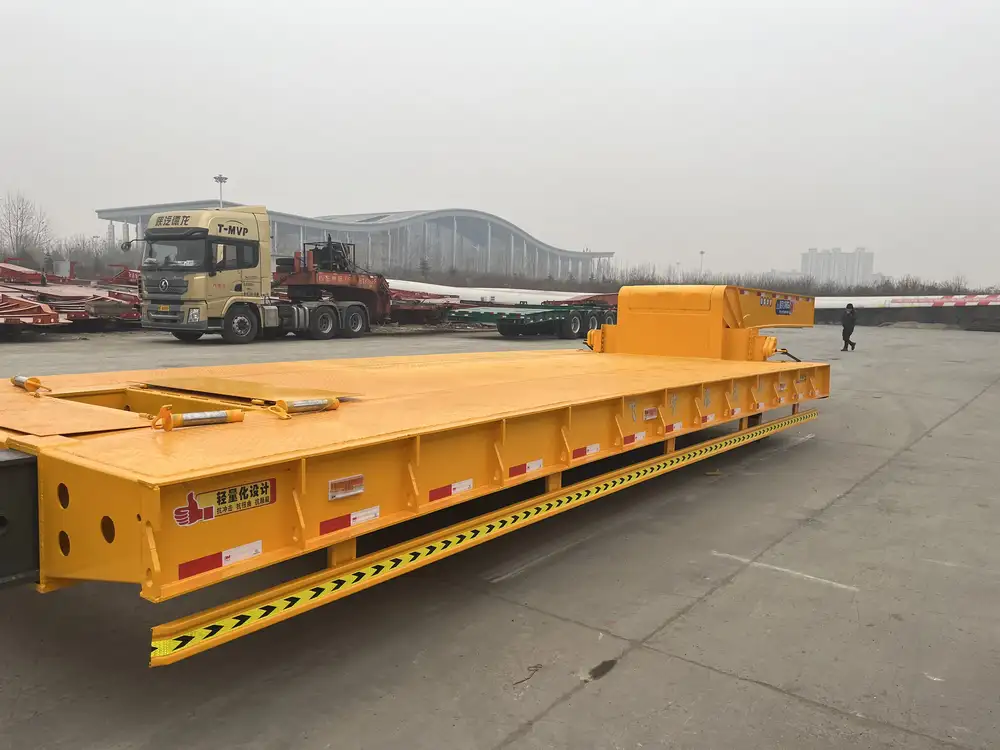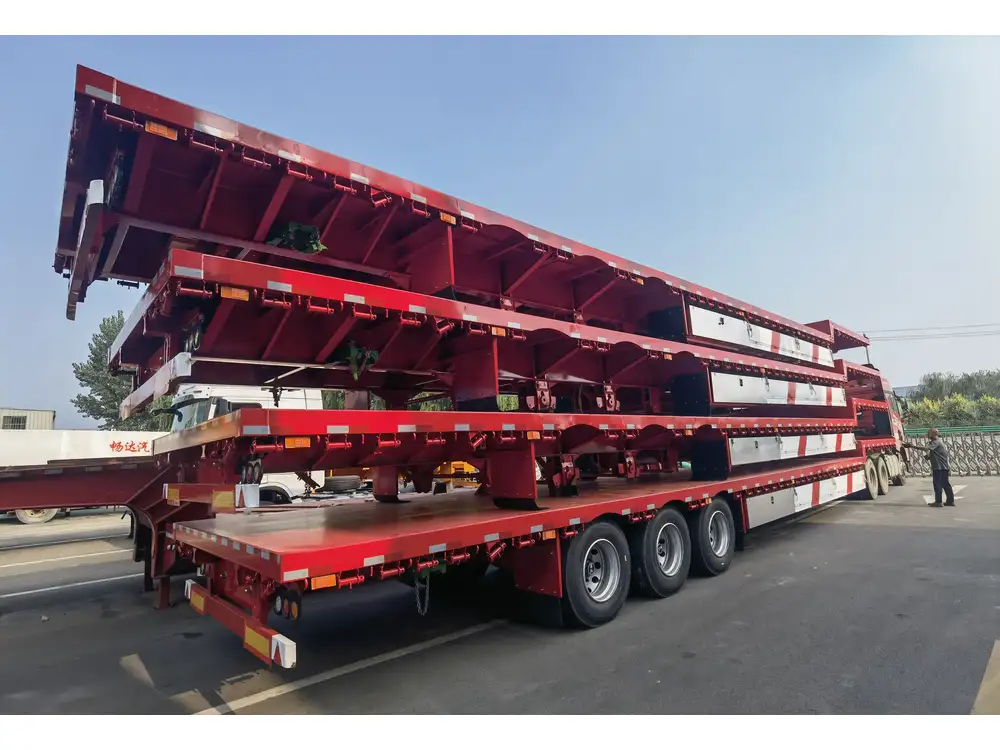Introduction to Semi Truck Weights
When delving into the world of commercial trucking, one of the pivotal concerns is weight. How much does a semi truck weigh with a trailer? This question is frequently posed by fleet operators, logistics companies, and anyone involved in transportation and freight management. Understanding the total weight of a semi truck with its trailer is crucial for compliance with regulations, road safety, and ensuring optimal performance.
Understanding Weights: Semi Truck Components
To accurately comprehend the weight of a semi truck along with its trailer, it’s essential to break down the components that contribute to its overall weight. The weights can be categorized as follows:
| Component | Weight Range (lbs) |
|---|---|
| Semi Truck (tractor) | 15,000 – 25,000 |
| Semi Trailer | 10,000 – 25,000 |
| Cargo Load | 20,000 – 50,000 |
Let’s further explore these components and the factors influencing their weights.
1. The Semi Truck (Tractor)
The tractor, or semi truck itself, is designed for powerful performance. It typically weighs between 15,000 to 25,000 pounds (lbs), varying based on several factors, including:
- Chassis Material: Different materials contribute differently to weight. Steel trucks generally outweigh their aluminum counterparts.
- Engine Type: Heavy-duty engines, necessary for transport of substantial loads, increase weight significantly.
- Attached Equipment: Additional components such as extra fuel tanks or customizations impacted by the manufacturer’s specifications.
2. The Semi Trailer
The semi trailer, essential for transporting goods, contributes significantly to the overall weight. It can weigh anywhere from 10,000 to 25,000 lbs. Factors impacting the trailer’s weight include:
- Type of Trailer: Flatbeds, refrigerated trailers, and enclosed trailers all have different construction weights based on design and function.
- Material Used: Materials such as aluminum, steel, or composite materials provide variations in weight.

3. Cargo Load
Cargo is arguably the heaviest component. Truckers must account for the weight of the payload when considering a safe load. Cargo weight typically ranges from 20,000 to 50,000 lbs. It’s critical to acknowledge:
- Type of Cargo: Certain materials, like metals or machinery, tend to be heavier compared to others like textiles or paper products.
- Legal Weight Limits: Understanding the maximum weight limits established by federal and state regulations is essential for trucking operations.
Calculating the Total Weight
To derive the total weight of a semi truck combined with a trailer and cargo, one must sum the weights of each component:
[ \text{Total Weight} = \text{Weight of Truck} + \text{Weight of Trailer} + \text{Weight of Cargo} ]Example:
- Weight of Semi Truck: 20,000 lbs
- Weight of Semi Trailer: 15,000 lbs
- Weight of Cargo: 30,000 lbs
Total Weight Calculation: [ 20,000 + 15,000 + 30,000 = 65,000 \text{ lbs} ]
Legal Considerations Regarding Weight
Staying compliant with weight regulations is critical for safe transportation. Many factors play a part in how much weight a semi truck with a trailer can carry, including:
- Federal Bridge Law: This law specifies the maximum weight a vehicle can safely carry based on the number of axles and spacing.
- State Regulations: Each state may have its own weight limits; thus, it’s crucial to check local regulations when planning routes.
- Loading Regulations: Proper cargo distribution affects safety and control; loads must be secured and balanced to prevent accidents.

Importance of Weight Management
Mismanagement of truck weight can lead to disastrous consequences such as:
- Legal Penalties: Overweight trucks can incur hefty fines and legal complications.
- Safety Risks: Excessive weight can compromise vehicle handling, making it more challenging for operators to control their trucks.
- Increased Wear and Tear: Excessive weight accelerates wear on tires, brakes, and suspension systems, leading to increased maintenance costs.
Weight Tracking Tools and Technology
As technology progresses, several tools and techniques assist fleet operators and truck drivers in weighing their loads accurately:
- Onboard Weighing Systems: These systems provide real-time weight data and help drivers monitor their loads dynamically.
- Portable Weigh Stations: Many truck companies invest in portable scales that enable quick and efficient weighing without needing to stop at stationary weigh stations.
- Mobile Applications: Various apps offer weight tracking features, and real-time data can be accessed via smartphones to ensure compliance.
Commonly Asked Questions about Semi Truck Weights
Q1: What is the maximum weight limit for a semi truck with a trailer?
The maximum allowable weight, including the tractor, trailer, and cargo, is usually around 80,000 lbs for most federal highways in the USA. Individual states may have different regulations, particularly for specific routes or roads.

Q2: How does weight impact fuel efficiency?
Higher weight leads to increased fuel consumption. Every additional 1,000 lbs can decrease fuel efficiency by approximately 0.5 to 1%, creating significant cost implications over time, especially in long-haul operations.
Q3: Are there specific guidelines for weight distribution in a semi truck?
Indeed, ensuring that the weight is evenly distributed among the axles will comply with regulations and enhance steering, braking, and overall vehicle stability. The front axle should support about 12,000 to 15,000 lbs while ensuring legal compliance.
Q4: How can I determine my truck’s weight before loading?
Operators can use designated over-the-road weigh stations or invest in portable weigh scales to gain insights into their truck’s weight before load aggregation.

Q5: What are the repercussions of not adhering to weight regulations?
Failing to comply with established weight regulations can result in fines, truck detention, and potentially losing your journey or business reputation due to risk factors involved with overloaded vehicles.
Conclusion: The Significance of Understanding Weights in Semi Truck Operations
In summation, comprehending how much a semi truck weighs with a trailer isn’t merely a matter of body count; it involves a comprehensive grasp of federal and state laws, safety implications, vehicle performance, and operating costs. From understanding the components that contribute to the overall weight to utilizing modern technology for effective weight management, fleet operators and logistics agencies can ensure optimized performance while adhering to regulatory standards. This knowledge mitigates risks and promotes a culture of safety and efficiency in the trucking industry.
By arming yourself with a detailed grasp of semi truck and trailer weights, strategic routes can be planned, costs managed, and legalities navigated smoothly, ensuring seamless operations in the dynamic terrain of transportation logistics.



